There are several ways to check the energy efficiency of your home. You can hire someone to come in for a professional home energy audit, but there are also steps you can take to see how your home is performing without a professional. Here are five ways you can perform a do-it-yourself home energy audit.
1. Find Air Leaks
When searching for air leaks, there are multiple places you’ll want to check. Inside your home, you’ll want to look at your baseboards and places where your walls and ceilings come together. Outside of your home, you’ll want to look at windows and doors, as well as places where different building materials meet. Switches and electrical outlets can also be common areas for air leaks.
A simple air leak test inside your home is to put your hand up to any of the aforementioned areas and see if you feel any air. This can be especially effective on a cold day when you’ll feel a cool draft.
After locating air leaks inside or outside of your home, make sure to seal them. Caulk or weather stripping are useful tools to help seal up leaks found in the foundation, windows or doors.
2. Check Insulation
According to the U.S. Department of Energy, if your insulation levels are less than the recommended minimum, the energy loss in your home could be very large. However, the insulation level depends on when your house was built. The builder probably used the recommended level for that time, but those levels may have changed as your home aged.
If you are unsure of the recommended insulation level for your area, the ENERGY STAR site can help. After determining your insulation level, follow the instructions found here to make sure you check your insulation levels properly and are able to fix them if needed.
3. Check Electronics
Electronics are used in many areas of our homes. Though it may not always seem like it, all of those electronics add up. Even when electronics are turned off they are still drawing power. Unplugging or using a power strip for your all of your electronics so they are fully turned off could make a difference when it comes to your energy bill. Check electronic items such as printers, speakers, microwaves, DVD players, or game consoles, and consider unplugging them once you’re finished.
4. Check on your Heating and Cooling Systems
Make sure you are performing the recommended maintenance on your unit, whether that’s changing the filters in your furnace or having a technician come out once a year to service your equipment. Also, consider replacing your unit if it is over 15 years old. There are new, more energy efficient models that could reduce your energy consumption.
5. Check your Light Bulbs
If you are still using outdated light bulbs, consider upgrading to more energy efficient options, like LEDs or CFLs. These newer, efficient lighting solutions are cost-effective and can assist in lowering your utility bills. Along with updated light bulbs, consider using dimmers or timers to help you reduce the amount of time your lights are on.
--
After checking these things in your home, consider what your next steps should be. What are the larger projects that you may need to hire a professional for? Are there small things you can take care of? Once you have these nailed down you can start to work on making your home more energy efficient and start to save money on your monthly bills. To get additional energy saving tips, check out NOPEC’s Tip House.


